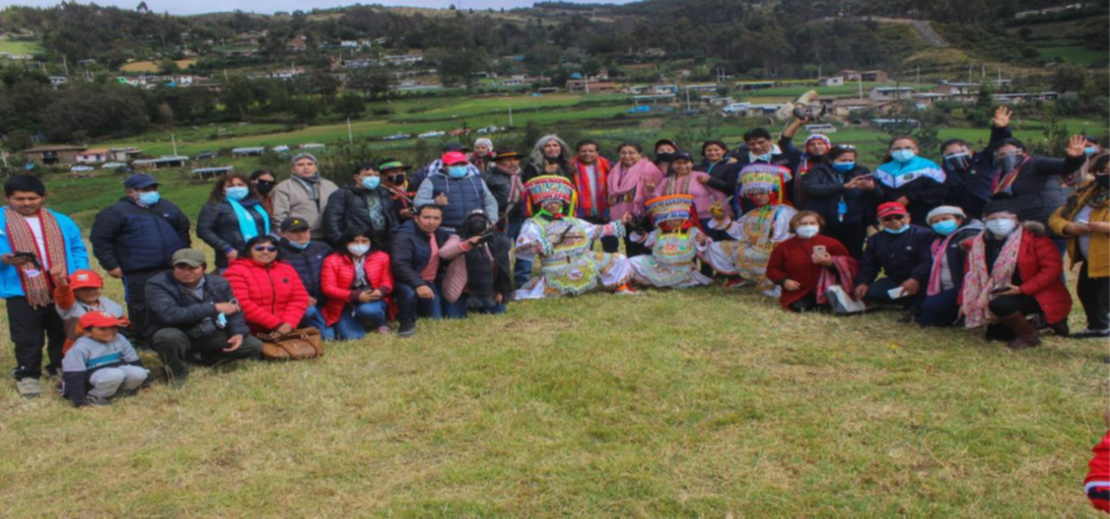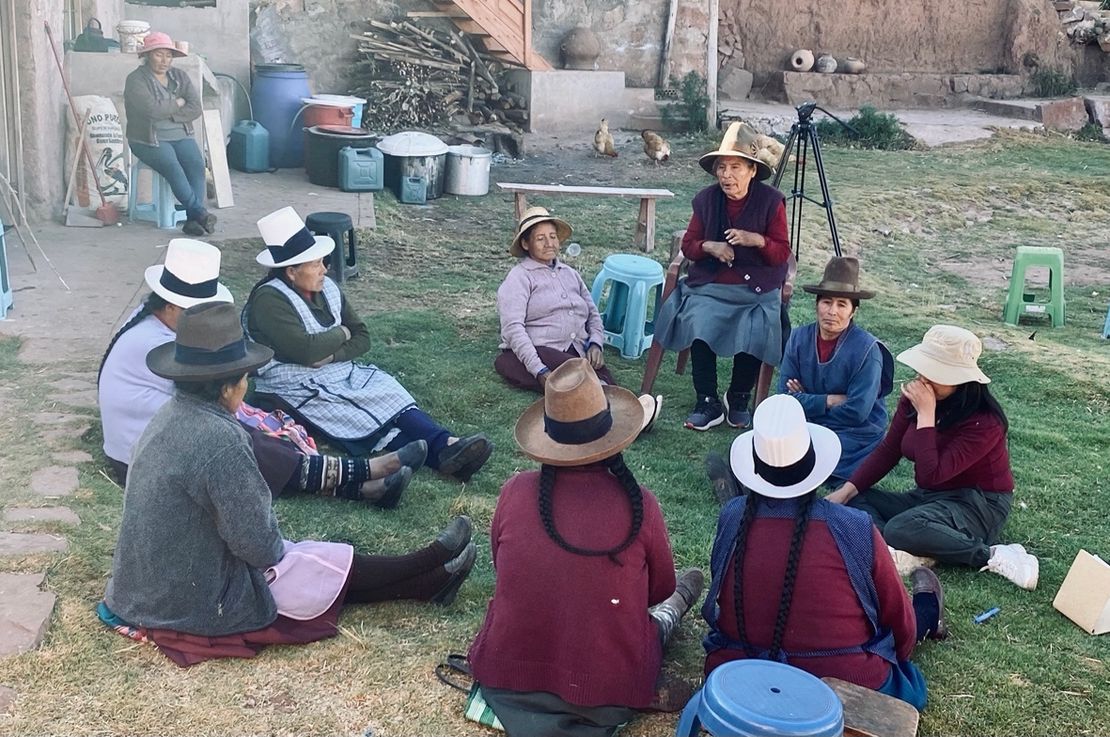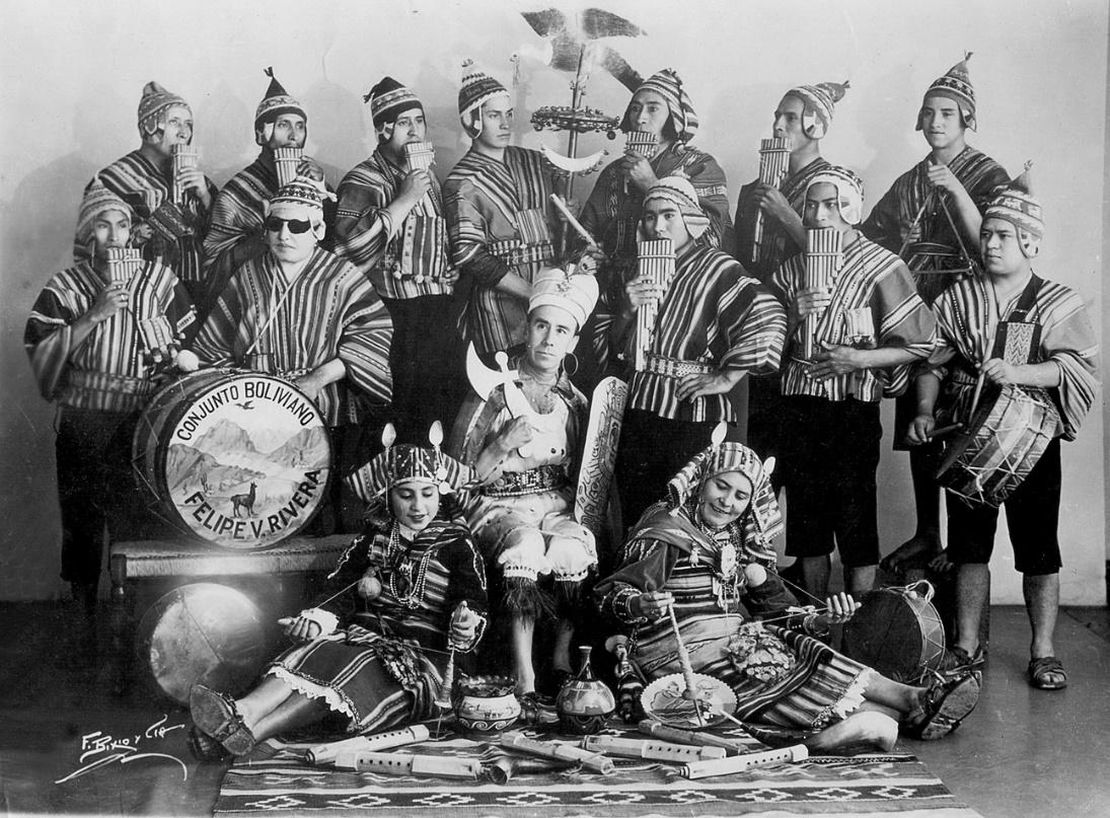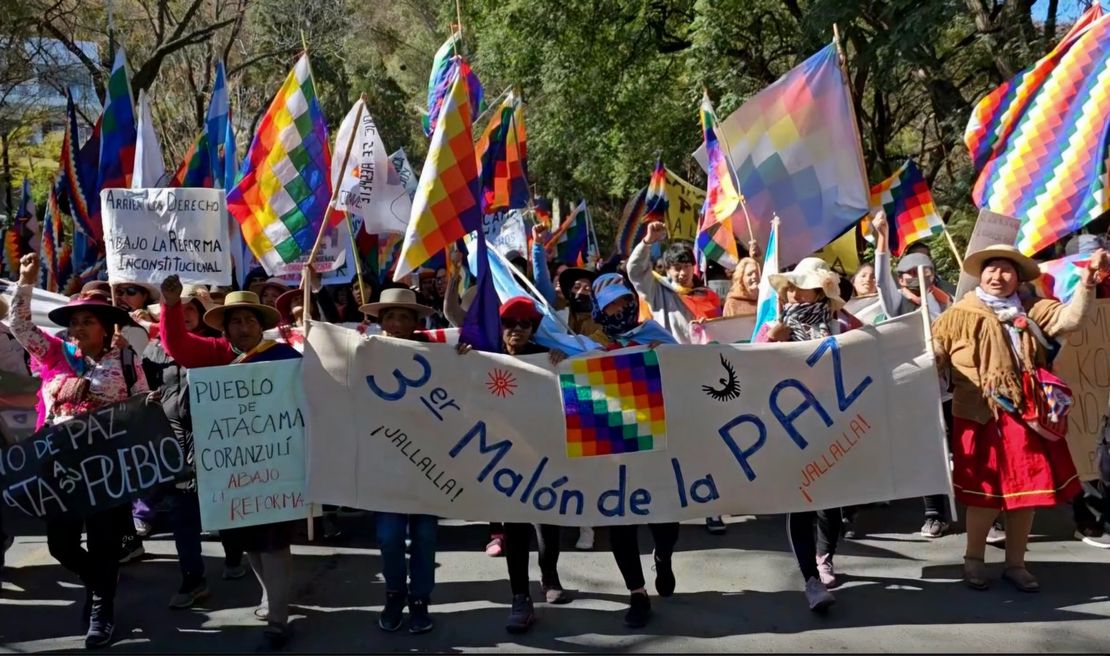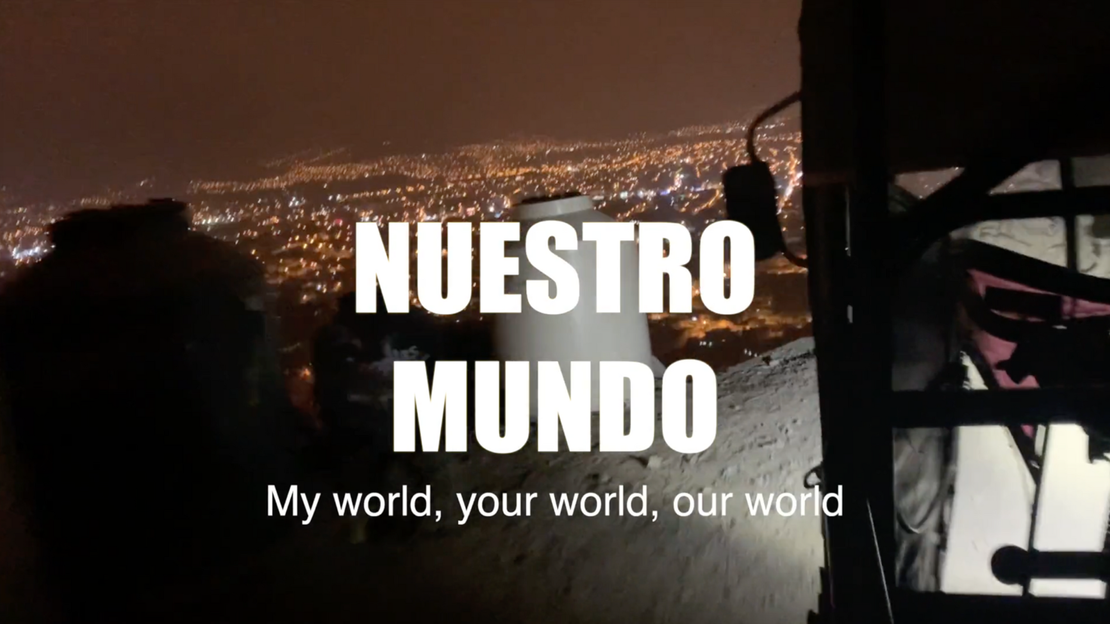Abstract
Quechua is the most widely spoken Indigenous language in the Americas. However, Quechua Language and culture remain widely marginalized across the postcolonial states in which they exist. The Regional Community Education and Cultural Identity Collective, RIKCHARISUN, which means “Let’s Rise Up” in Quechua, is a collective of institutions and people committed to strengthening the cultural and linguistic identity of Quechua peoples. To advance this goal, the collective seeks to mobilize the regional society of Apurímac, Peru, to address and overcome the historical marginalization of the Quechua peoples in national society and across Peru. RIKCHARISUN works not only to elevate and strengthen Quechua culture, but also to develop public policies that guarantee collective rights related to culture and language in all sectors of Peru.
In this interview, RIKCHARISUN coordinators Elizabeth Corimanya and Marcelino Galindo share some of the collective’s founding principles, connecting them to the ways in which social and cultural elements are intertwined in the struggle for language revitalization. They also speak of broader commitments to Indigenous peoples at a time of extreme authoritarianism and state repression, both in Peru and in Latin America in general.
Could you provide a general context about the situation of the Quechua peoples (runakuna) in Apurímac and the impetus for RIKCHARISUN?
Elizabeth: Apurímac, territorially, is formally recognized as a cradle of diversity, due to all of its historical intercultural antecedents, leading to the coexistence of many pre-Columbian and Inca cultures throughout the territory. There are various ethnicities present in the region including the Qotaniras, Qotapampas, Yanahuaras, Umasuyus, and Antahuayllas. However, there has been a notable decline in the number of Quechua speakers. While the 2007 census (INEI, 2007) indicated that 85% of Quechuas actually spoke the language, in 2017 only 70% did. The decline of Quechua speakers can be attributed to the lack of a language policy to protect and preserve Indigenous languages.
The latest census of Apurimac found 405,759 inhabitants, of whom 70.75% said that their mother tongue was native Quechua, while 28.45% indicated it was Spanish. The Quechua-speaking population in the provinces according to INEI 2017 is as follows: Abancay (53.8%), Andahuaylas (75.8%), Antabamba (80.0%), Aymaras (74.9%), Cotabambas (78.9%), Chincheros (76.6%), Grau (86.6%). With regards to demography, 84.1% of the population aged 12 and over self-identifies as Quechua, 9.9% as mestizo and 2.5% identify as belonging to another Indigenous people. In the census we also find an urban-rural divide: in the urban centers, 78.1% of the population identifies as Quechua compared to 89.2% in rural communities, which is more than enough reason to develop programs and projects that strengthen and invigorate the validity of the Andean culture and Quechua Language, especially in urban spaces. We find this to be of critical need, particularly at this juncture of social crisis in which racial, linguistic, and cultural discrimination against [Quechua-speaking] Peruvians is so acute. The gaps of the cultural asymmetries imposed by the Ministry of Education, in which the lack of Intercultural Bilingual Education continues to be seen as a non-essential problem, continues to impact our daily realities. It is within this context and shared interest to combat this structural neglect that the RIKCHARISUN Collective was founded, to unify forces and identities based upon language and culture. Its guiding principle is to seek alternatives and mechanisms to not only defend but also secure Quechua as a central element of our territory. Despite the lack of political will and decision-making, Quechua and the Quechua People continue to survive.

Indigenous Languages Day Forum – Regional Government of Apurímac. May 27, 2018. Photo credit: Arí Vásquez
Machi: Almost all of us in Apurímac think and feel in Quechua, which means that our thoughts and feelings are configured in two logics, in Quechua and Spanish, we understand the world from both—this is one of the great immaterial riches that we have. Therefore, we act with these two logics, which is why, for example, when we start agricultural activities on the farm, the first thing we do is ask permission from Pachamama through offerings, such as the challa or the tinka.
One of the reasons why we lead the collective is precisely to develop this way of life, not only as a discourse, but as a practice of life, what is known as sumaq kawsay.
What do you see as the reason for Quechua’s historical marginalization, and what systems or mechanism perpetuate it?
Our parents and grandparents have experienced systematic processes of extermination in the form of structural contempt, rejection and marginalization since the Spanish invasion. To this day, we can still see the aftermath of this long and painful experience. Proof of this for example can be found in the identities that our parents define for us that is often influenced by the church. We have been given names in Spanish, and now, the new generation of parents have been giving their children names in English or another language so that, at least in name, we may resemble the “White” person.
On the other hand, discrimination and racism remains prevalent throughout our country. Oftentimes, the people who discriminate against us are our own brothers who have acquired a certain economic power. As such, and with great sadness, we find our country socially broken. For this reason, from the Ministry of Education, the institution in which I work, we are proposing Intercultural Bilingual Education for all. Our main objectives are to address the following:
The colonialist structure that still persists in the Peruvian state, where Constitutional rights are not respected;
Cultural and Linguistic Prejudices imposed by a colonialist Society;
Institutionalized Discrimination and Stigma of the Quechua Language for cholos and those of lower social strata;
The encoded racism against Native Cultures found within Western Cultures;
The Education achievement gaps Between Urban and Rural areas tied to the use of Quechua Language;
Cultural asymmetries that persist in the country

Apu Tinkay (Mountain Encounter) – Mirador de Taraccasa Abancay. Aug 21st, 2019. Photo credit: Arí Vásquez
That Quechua persists, as you all attest, reflects a culture that is not only present but carries on regeneratively, embodying the title of Silvia Rivera Cusicanqui’s book, Oppressed but not Defeated. It is clear that language revitalization is not simply a multicultural issue but a political one. Could you elaborate a bit more on the politics of Quechua culture beyond multiculturality? Upon listening to your responses, it seems to me that this project is much more than simply about representation but rather a particular form of representation according to unique lifeways.
Yes, that’s correct, because Quechua is not only a language but also a culture, which across more than 500 years of colonization still survives, all the while facing strong obstacles for its legitimation, including social, political and cultural recognition. This has led to the movement of organizations and Native peoples to demand its national and international recognition. These movements have pushed for the application of ILO 169 and the Law of Indigenous Languages and its implementation for linguistic rights. The struggle of the native peoples has been stubbornly persistent in claiming their language and culture, speaking directly to Silvia Rivera Cusicanqui’s title, “Oppressed but not defeated.” Organized since 2010, the National Congresses of Intercultural Bilingual Education were crucial in helping to legitimize culture, particularly in working out the language for the educational law N° 28044 (July 29, 2003), which recognized homeschooling based upon our own cultural or Indigenous language. This is important in a country with 43 Indigenous languages and where more than 76 ethnic groups are recognized in different territories, including Amazonian Indigenous peoples, Quechua, Aymara and Afro-Peruvians.
Indigenous peoples remain a politically organized force, linked to instruments of territorial management that are legitimized through the social and cultural activities that we continue to engage in throughout our region. This is the historical and ancestral legacy of our peoples and that today forms the Andean culture of Apurímac.
Why is collectivity important for cultural preservation? How is the Quechua culture defined by its collectivity?
In the Quechua culture collectivity is a legacy of the allin kawsay, circumscribed in principles of duality, reciprocity, complementarity. This is centered on a kind of agrocentrism, where the vortex of political, cultural, economic and social dynamics among native peoples occurs in the cultivation of the chacra (farm). Here, ways of living with the Pachamama and tutelary deities are practiced through religiosity, rituals or offerings, what is known in Quechua as Qaywarikuy. However, these cultural practices are not legitimized in society as such. The asymmetries between cultures constitute a threat to the loss of identity due to assimilation and acculturation into globalizing systems. In line with the work of Silvia Rivera Cusicanqui is the Tayta (paternal figure) José María Arguedas, an indigenist fighter demanding intercultural justice. Throughout his work he called out the genocide and discrimination against Andean cultures, all the while attempting to elevate their social status. Ultimately, the colonialist structures of racism, particularly creolism would end up robbing him of his life and important work. For Arguedas, cultural unity was necessary because of the great values and contributions that each community carried within them. At the same time, he cautioned that this process should not become a form of “acculturation” at the expense of relinquishing the culture of vulnerable or “defeated” peoples. In his famous speech “I am not an acculturated Person” (Lima, October 1968), Arguedas demanded the legitimation of cultural diversity in all spaces of the political, educational, and social spheres, demanding the restructuring of the State so that it would belong to todas las sangres. [Literally, Arguedas’s phrasing is “all the bloods”, but perhaps this is accurately translated as “all our lineages.”].
One way to preserve culture in time and space is in to integrate it into educational forms, creating the possibility of intergenerational transmission of ancestral knowledge. For this to happen, the teacher must know the students’ cultural universe and their traditions, as well as their family and community customs and stories. All of this needs to be part of a teacher’s political and pedagogical practice in their relationship with the student. Talking about ethnicity and language is not simply a gesture to affirm diversity, but a way of feeling Peruvian identity in all of its manifestations. Despite the colonial process, this remains alive and vibrant in various contexts of Peruvian society.
Finally, how can the preservation of language and culture be accomplished? It requires both systemic and epistemological shifts:
Considering cultural diversity as something positive rather than a problem
Respecting and valuing cultures for the contribution that they bring
Living interculturally as a project for life
Legitimizing educational initiatives that serve to recognize and develop the cultures of original peoples
Confronting the challenges of modernity as Quechuas, Aymara, Amazonians and Afro-Peruvians, without losing our cultural identities
Seeing interculturality as an opportunity to build bridges for peace and Allin Kawsay (Good Living)
Could you share some of your most effective pedagogical practices that you have utilized as a member of RIKCHARISUN?
We have developed a project for educational reform, specifically for bilingual intercultural education called “Quechua for all.” This reform initiative is based on recognizing and normalizing educational processes connected with cultural knowledges and practices. It is also important to make Quechua accessible at all levels, particularly as part of the 2036 “Qispinanchispaq” educational initiative in the Apurímac region. We also seek to develop ancestral language education in urban contexts.
We bring all of this together in our Andean New Year celebrations held on the 21st of June, authorized by the Resolución Directoral Regional N° 1293-2022 DREA, an important ritual that allows us to recover our relationship with Pachamama and our Andean deities.
Finally, we celebrate the life and legacy of José María Arguedas on the 28th of June, in collaboration with local and regional offices, parents, kids and the general population.
